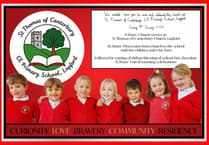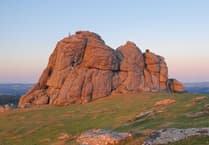AT the March Crediton U3A meeting, we were treated to a very interesting and colourful presentation by Lynne Carroll, a local U3A member who recently spent 10 years living in Australia, five years of those working in a heritage 1850s settlers’ property, Lanyon Homestead.
Lanyon is situated at Tharwa on the Murrumbidgee River in what is now the Australian Capital Territory.
Although Lynne’s main role was as a tour guide, she undertook a variety of roles during her employment including relief housekeeper and wedding arranger.
We learnt about the ancient history of the area and the local Aboriginal tribe, the Nunnawal People who, although nomadic, used Tharwa as a meeting place.
Lynne then continued with a history of the first settlers at Lanyon, James Wright and John Lanyon who undertook the three-month sea journey, followed by the six-week bullock cart trip to the edge of European settlement and squatted on the land.
James Wright remained after his friend returned to England and began the creation of the Lanyon Estate.
He was allocated a convict labour team of between 35 and 50 who undertook various roles including shepherding, blacksmithing and even a cutler.
The property had to be self-sufficient as the local town was 20 miles away.
There was also one female convict who acted as nursemaid to the Wright’s children. Keeping discipline amongst the convicts was understandably difficult and some underwent punishments which included flogging.
When the convict labour scheme was abolished in New South Wales in 1850, Wright was declared bankrupt and the property was sold to Andrew Cunningham, a Scottish banker who had emigrated with his family.
That began Lanyon’s Cunningham Dynasty. It is a common thread in Australia that among the large estate owning families, often the first generation built it, the second built on its success and the third lost it. Lanyon was no exception. Andrew Cunningham worked hard and expanded Lanyon into a huge estate concentrating on the lucrative wool market.
After a few years, he built the homestead we see today, an impressive colonial style single storey house, built of local stone and cedar, with large verandas and many French windows.
Jane, Andrew’s wife was a keen plant collector and there are many heritage shrubs and trees which still thrive on the property. Andrew’s two sons continued the estate’s expansion, creating a large and prosperous business and an elegant Edwardian mansion.
Unfortunately, when we come to Andy, Andrew’s grandson, it is a different story. Preferring horses, playing sport and spending time with his friends to learning to run the estate, he was a disappointment. While at university in Sydney, he was selected for the Australian Olympic Rowing team, but had to decline when his father refused to pay the expenses involved in a trip to Germany.
He was told he had to return home and learn to run the estate.
As soon as World War One was declared, Andy enlisted as a private alongside his mates from the estate and joined the Australian Light Horse Regiment who are world-renowned for their impressive horsemanship.
He saw action at Gallipoli and in the trenches on the Western Front and was soon promoted to Captain.
He was renowned for his bravery and was awarded the Military Cross, but was also known for his high jinks, one of which resulted with his being Court Martialled and Severely Reprimanded for knocking the tarbush off the head of a senior Egyptian official in a Cairo hotel one night.
When Andy returned home, he showed little interest in the estate and took to drinking.
When he inherited Lanyon, he spent his time and money on his favourite past-times: horses, drink and a light aircraft.
The estate soon deteriorated and in the mid-1920s it was sold. A cattle baron called Field owned it for about 50 years until it was compulsorily purchased in the 1970s by the ACT Government and the property was reduced to its current size of 100 acres, the exact footprint from the time of James Wright.
Lanyon Homestead and parkland has been open to the public since 1978 and the estate is still a working sheep and cattle station, with approximately 2,000 sheep and 800 cattle.
Lynne also went on to tell us about the variety of wildlife on the property, including kangaroos, wombats, possums, snakes, spiders and the fabulous birdlife.
She concluded her talk with a short extract from a poem by the famous Bush Poet, Dorothy McKellar.
Kindly written up by Lynne Carroll.
There were 64 people who enjoyed this presentation as well as refreshments. Yes! refreshments are back but all due care and attention is being paid to Covid hygiene. Most people wore a face covering, thank you.
We held a collection for Ukraine which raised the marvellous amount of £620.10, which makes a total of £2,440.40 because “Simply Health” matched our total and then the government matched that.
Thank you to everyone who contributed in these cash strapped times.
S. Ragalsky





Comments
This article has no comments yet. Be the first to leave a comment.